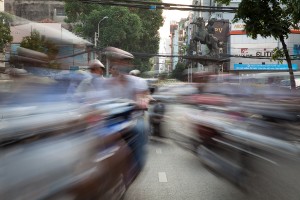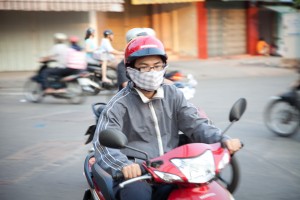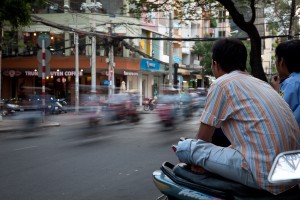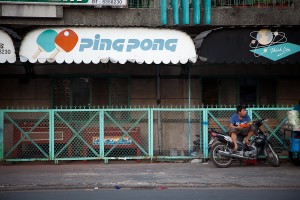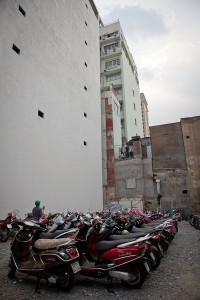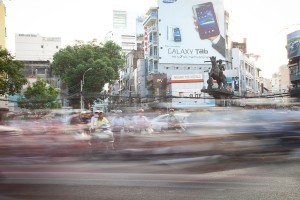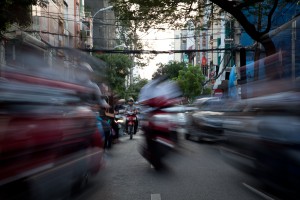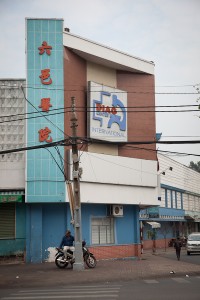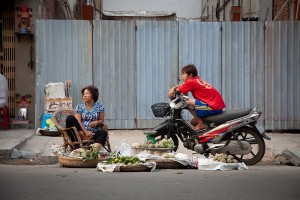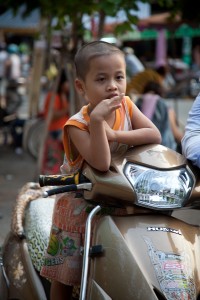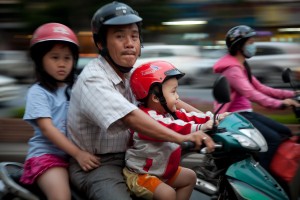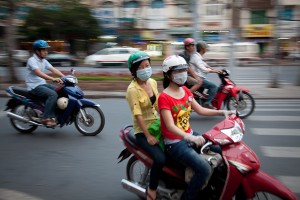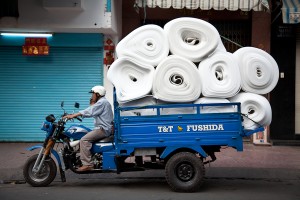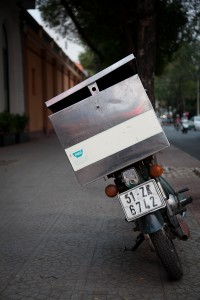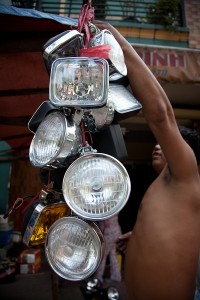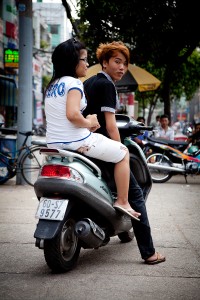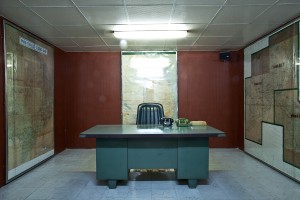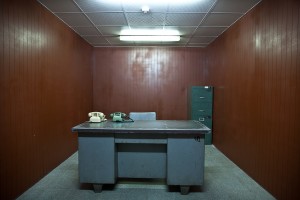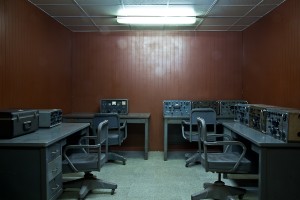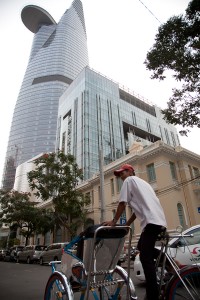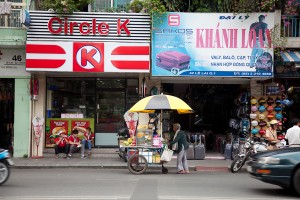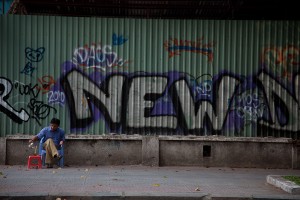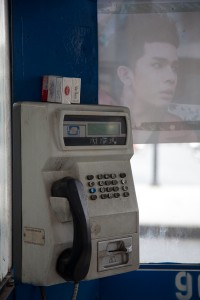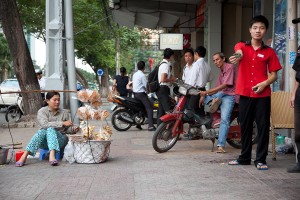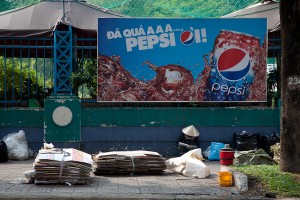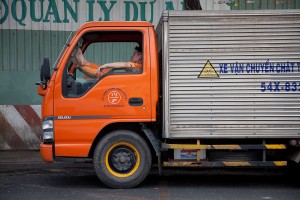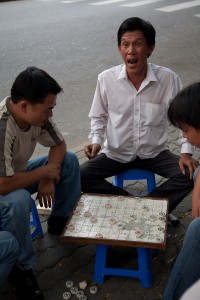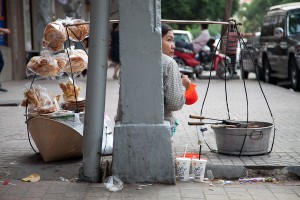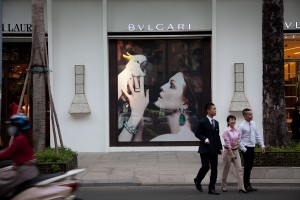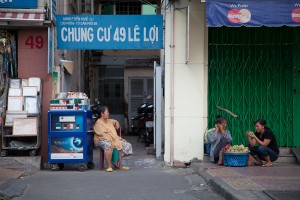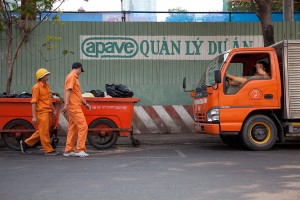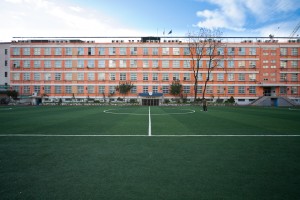A few decades ago in China, young couples sought to own a bicycle, a sewing machine, a wristwatch and a radio before committing to marriage, the accoutrements of a new family on the rise. In Vietnam, the same was true until about ten years ago when, thanks to the opening of the economy, the bicycle was replaced with its motorized cousin, the motorcycle (or what Americans, accustomed to Harley Davidson definition of “motorcycle,” would probably refer to as a “scooter”). Replete throughout all of Southeast Asia, motorcycles seem to be in greater abundance here than anywhere else in the region – at rush hour every red light sees a rapid accumulation of them building up at the front of the line of traffic, weaving their way around cars and busses, only to burst forward like a swarm of very determined bees at the signal’s change (a chemistry or physics analogy seems apt here, something about heavy particles and light particles, but I lack the scientific knowledge to draw one – help, readers?).
At the risk of digression, it’s interesting to note the role of motorcycles in Vietnam when compared with the more affluent and status-hungry Thailand, where cars have become the mark of one’s arrival to the middle class and motorcycles are looked at as an indicator of one’s lowly, proletarian station. This is seen most readily in the Bangkok educated class’s attitudes towards dek wan, a teenage subculture known for their love of punk-derived style and late-night motorcycle racing (I wager, in fact, that for most Bangkokians, dek wan are the primary association made with the motorcycle). Seen as Thailands answer to “street gangs,” the media there have embraced the type of fear-mongering journalism common in the United States in the 1990’s, frequently reporting on dek wan races, accidents and police busts of wan gangs. And much like white America, when the subject comes up most middle class Bangkokians will shake their heads, cluck their tongues and bemoan the sad state of modern society, citing dek wan and their motorcycles as the primary cause of what’s gone wrong. I don’t know enough about Vietnamese culture to know exactly what the motorcycle connotes here, but a quick glimpse around leads me to think they’re still more of a status symbol (or at least just a really convenient way to get around), and, have nothing to do with being (to co-opt a phrase from Darwin) a mark of one’s lowly origin.
Indeed, it is impossible to imagine a modern Vietnam without motorcycles, ridden by people of all ages and used as far more than a mode of transportation, the motorcycle here is entertainment, a work horse, a fashion accessory, a comfortable lounge chair, and, it would seem, a trusted companion.
Without further adieu, I present to you a photo-homage to one of my favorite aspects of Vietnamese life: the motorcycle. (don’t forget to click on the images for a full-size view)
